Over the past decade or so, Bethesda Game Studios has distinguished themselves as one of the most popular and innovative studios in the industry, largely due to the immense success of their open-world fantasy series The Elder Scrolls. The Elder Scrolls III: Morrowind was the first in a line of insanely detailed, living and breathing fantasy worlds, and The Elder Scrolls V: Skyrim was, and is, a phenomenon in itself. When Bethesda took over the production of the game that eventually became Fallout 3, this opened up Black Isle’s rich, post-apocalyptic world to the Bethesda treatment, and a new flagship series was born. Fallout 4 is just the latest in this excellent series.
Crawl Out Through the Fallout Like in any Bethesda game, the main plot is not the main event. Don’t get me wrong – Bethesda is capable of making some truly awesome questlines, and the main storyline in Fallout 4 is a good one. But I’ve seen other reviews that complain about the lack of depth in the storyline and character development, and I can’t help but think they’re missing the point. That’s not what a Bethesda game is about. More on that in a bit.
The actual plot of Fallout 4 takes place in 2287, ten years after the events of Fallout 3 and 210 years after the mushroom clouds went up and ended the world as we knew it. Or, as they knew it, I should say – the Fallout timeline departs from our timeline some time after World War II, the course of technological development much more atomic and mechanical than electronic, and the culture stuck in a sort of 1950s-era arrested development. In 2077, outside of Boston, the main character (male or female) and his or her small family is given a place in the local Vault-Tec facility, Vault 111, and not a moment too soon, as the bombs start falling not long afterwards. Vault-Tec has ulterior motives, though, and as we learned in previous games, the real purpose of the Vaults was to create closed laboratories for scientific experimentation. In Vault 111, the residents are cryogenically frozen, the intention being to test the effects of long-term cryogenic hibernation on the individual. Something goes wrong, though, and you wake up at some point to see a man trying to take your infant son Shaun out of the arms of your wife (or husband). She struggles and is shot – the child is taken, and despite your protests from inside your cryo-pod, you eventually lose consciousness again.
When you awake, all the other folks in the Vault are dead, as for whatever reason, the life support systems failed. Your wife, too, is gone. The only thing left to do is to take the wedding ring from her lifeless fingers and head out in search of your son. The search leads you through the corridors of Vault 111, where you eventually find some weapons and supplies, including a Pip-Boy 3000 wrist computer, the series’ iconic user interface system. You exit the Vault and head back down the hill to your home in Sanctuary Hills, where your own Mr. Handy robot is waiting for you – except, to your astonishment, you find he’s been waiting for over 200 years. And this is where your path truly begins, on a journey that will take you across the Commonwealth (roughly, Massachusetts) and put you in touch with diverse and sometimes mutually hostile factions including a local defense militia calling themselves the Minutemen, the ambitious Brotherhood of Steel, and the mysterious and feared Institute, who are responsible for the creation of the “Synths”, artificial beings that are in many cases indistinguishable from humans.
The main questline is interesting enough, but what really makes a Bethesda game are the numerous side-quests and secondary questlines. Some of these involve securing farms and outposts and setting up bases there, various jobs for the Brotherhood of Steel, and even a big heist. But what I really enjoyed most were the one-off side-quests, some of which you pick up just by overhearing conversations. One of my favorites was one in which you have to help the host of Diamond City Radio man up a bit and gain some confidence – after the mission his on-air personality changes drastically. Other missions might have you recovering paint from an abandoned hardware store, or finding some long-lost baseball memorabilia.
Orange Colored Sky It’s cliché to say so at this point, but the real main character of Fallout 4, the only one that shows any real depth and/or development, is the world itself. The Commonwealth is an alternate-universe version of our own Boston and surrounding towns and countryside. Given the location, American Revolution themes have a major role to play in the region's character, as many of the in-game locations are the site of some important events in American history – Lexington, Concord, Bunker Hill, Salem, Boston Harbor, etc.
Like in Fallout 3 and New Vegas, they’ve also included countless landmarks in the game, some of which only Bostonites will recognize, but others are icons of the city and major tourist attractions. Aside from the Bunker Hill Monument, there’s the USS Constitution, tthe Old State House (site of the Boston Massacre, among other things), Boston Common, Trinity Church, and much, much more. The Freedom Trail, the real-life tourist path that goes past many of these monuments, actually plays a role in the main questline, as does the Old North Church, site of the “one if by land two if by sea” signal that supposedly launched Paul Revere’s ride. The major settlement of Diamond City is nestled safely within the walls of Fenway Park, and the ruins of the MIT campus, called “CIT” (Commonwealth Institute of Technology) in the game play a major role in the main plot. I don’t think the Brotherhood of Steel airship Prydwen is an actual location in Boston, but it’s in the game as well, anchored above what’s left of Logan Airport.
These locations are all scaled down of course, but they manage to capture the look and feel of the original structures. I actually visited Boston about a year and a half ago, and the chance to retrace my steps (in a way) was really cool. Of course, this is the world of Fallout, and not the real world, so certain buildings do not exist, particularly the more modern ones, like John Hancock Tower (200 Clarendon), the tallest building in the city. These are sometimes replaced with other buildings that would have been more appropriate for 2077 in a world that diverged from ours in the 40s, giving Boston in Fallout 4 a skyline that’s partially familiar in an eerie sort of way, but also vastly different. “The Hancock” is replaced by Trinity Tower, the tallest building in the game, which makes it an ideal building to jump off of in power armor, which cancels out fall damage.
The attention to detail is truly astounding, though – not just in real-world details, but little things like the Halloween decorations you find here and there (the “last month” was October 2077), architectural styles that match their real Boston analogues, and bodies strewn about that seem to tell their own backstories. The Commonwealth is inhabited not just by humans, but vicious, mutated beasts of all kinds including the Lovecraftian horrors known as Mirelurks, insanely overpowered Deathclaws, mutant hounds, and more. Intelligent life – so to speak – includes the Super Mutants, who were mostly absent from New Vegas, the ubiquitous Raiders, and Feral Ghouls, who for all intent and purposes are fast-moving zombies. And there are all kinds of opponents of the more robotic persuasion, too: turrets, Assaultrons, Mr. Gutsys, and of course, the dreaded Synths.
Perhaps more than any other game from Bethesda, the world of Fallout 4 seems plausible. As much as I liked the other games, they didn’t seem all that populated. I realize this is because Bethesda puts insane amounts of detail into their minor characters, and doesn’t just randomly generate them like they did in TES II: Daggerfall, but still, it was kind of disheartening to visit the Capital City in Cyrodiil and realize it had fewer people living in it than your high school’s graduating class. The Fallout games have a distinct advantage in that the worlds are supposed to be depopulated, so while there might not be more characters in Fallout 4 than in Skyrim, things just seem a lot more realistic. It’s clear that this place was once a bustling city, and when you’re actually exploring Boston, the place seems to be impossibly huge. Granted, many of the buildings are dummies, with no usable entrance, but a lot of them really can be entered, and each tell a unique story. Sometimes, it’s clear that a location that once belonged to Raiders now belongs to Super Mutants, or once that was once under Super Mutant control is now overrun by Feral Ghouls.
Some people have complained that the graphics are less than state-of-the-art. I just don’t see it. To me, the graphics in Fallout 4 on Xbox One are breathtaking, though that may have more to do with the sheer scope of the game and the level of detail involved. It might not technically have the best graphics available in the waning weeks of 2015, but if you climb to the top of a skyscraper or look down from the Prydwen and take in the fact that almost everything you see (and you can see for miles) is a unique and detailed location and aren’t impressed, you’re probably a snob. But hey, I remember the days when the graphics in Sonic the Hedgehog blew people away.
Now as far as design goes, rather than the technical aspects of the graphics, nothing beats Fallout for its absurd, slightly unsettling (or very much so) retro-futuristic objects and interiors, its depiction of the decrepit buildings and detritus of almost two centuries, and its detailed depiction of characters both great and small, from the fedora-clad Ghoul gangsters that “protect” Goodneighbor, to the noir-inspired synth private eye Nick Valentine, to the guards wearing baseball equipment in Diamond City, there’s always something to marvel at.
Pistol-Packing Mama Most of your time in Fallout 4 will be spent “dungeon-crawling”, and that means combat. The combat system is a modified version of the one in Fallout 3 and New Vegas – most weapons are guns of various types, which vary in terms of damage dealt, fire rate, accuracy, range, etc. There are also melee weapons you can find, and energy weapons like plasma rifles and laser pistols. The V.A.T.S. (Vault-Tec Assisted Targeting System), which represents a compromise between the first two Fallouts’ turn-based combat system and The Elder Scrolls’ real-time combat (Fallout 3 was based on Oblivion’s engine, after all), once again serves as the primary way to get the job done. Except in Fallout 4, time does not stop completely when you select which body part you’re going to aim at – it just slows down, and not even that much. Really fast enemies like Feral Ghouls and Deathclaws will usually have time to cover the distance between you and them before you can get a shot off, though the V.A.T.S. in Fallout 4 does allow you to select multiple targets in one “session”, provided you have enough Action Points.
The V.A.T.S. system does not give you the extreme advantage it did in the previous games, but this is made up for by the game’s completely overhauled run-and-gun mechanics. While the previous games did FPS more in the style of Half-Life, Fallout 4 feels a lot like Unreal Tournament in terms of its fluid movement and fast-paced action. The steel sights on guns work really well, especially if you mod them to add targeting circles, scopes, etc.; so well, in fact, that lots of times you can forego V.A.T.S. altogether. Another thing that makes combat and exploration a lot smoother is the fact that you no longer have to enter a transfer screen to loot corpses or containers – just look directly at it, and a menu will pop up showing you what’s in it, allowing you to remove whatever you like.
Weapons include pistols, rifles, shotguns, submachine guns, missile launchers, energy weapons, and several ridiculous devices such as the Fat Man tactical nuclear bomb launcher and other gimmicky weapons like the Junk Jet, which can fire various objects at high velocity, or the Syringer, a gun that allows you to fire hypodermic needles filled with nasty concoctions. Personally, I didn’t use either of these guns all that much, since keeping them stocked with ammo is too much of a hassle. As far as regular weapons go, I found that ammo was a lot scarcer in this game, which I see as a plus, since it forces you to be prudent and to try out different weapons types.
Armor is also pretty typical for the series, with stats for resistance to regular damage, energy weapons, and radiation. Various materials like leather, metal, and synthetic polymers provide different amounts of protection in each of these areas. Power armor has been completely revamped – the suits are fully customizable, and can accommodate parts from various models, all of which can be further modded. It’s still a lot clunkier to move around with than without it (as it should be), and it does use up rare Fusion Cores, but it’s more fun than ever to use. Other advantages it gives you are no fall damage, extreme protection against radiation, and greater carrying capacity including the ability to carry certain heavy weapons.
Fallout 4 does away with the need to repair weapons, which I always found to be more of an annoyance than anything. Unfortunately they also did away with the specialized ammo from New Vegas, and the ability to make ammo. But what they replaced it with is a deep modding system that allows you to enhance your weapons, armor, and power armor in a variety of ways. Weapons workbenches, armor workbenches, and power armor stations can be found throughout the game, particularly in settlements, and are very useful – the system is also a lot of fun to use, if only I could get enough damn adhesives.
The modding system is a part of the game’s overall emphasis on crafting, which is most evident in the settlement construction mode (see the companion article here). Bethesda has always filled their game worlds with lots of crap, some of which could be picked up and sold, but most of which was utterly useless and just took up space in your inventory. I can’t tell you how many times in Skyrim I had to dump a bunch of cast-iron pots or tongs I had accidentally picked up in the middle of a mission because I couldn’t run. But in Fallout 4, the junk is worth something – almost everything you pick up, and I mean everything, can be broken down into useful components and materials: steel, wood, ceramics, plastic, circuits, copper, aluminum, gears, nuclear materials, fiber optics, you name it. You can then use these materials in the building mode to expand your settlement, or more likely, use them to mod your weapons and armor.
Weapons mods include for instance changing out a gun’s receiver, sights, clip, etc. to increase various stats – a fully tricked-out weapon remains useful for a very, very long time. Armor mods include the addition of different materials such as lead lining, asbestos, or pockets, to increase that article’s resistance to damage, radiation, etc. or reduce its carry weight. Power armor can also be modded, with various paint jobs that can increase certain S.P.E.C.I.A.L. stats.
Accentuate the Positive ...Eliminate the negative, as the song goes. So let’s get the negative out of the way, or at least the not-so positive. Continuing what appears to be a trend for Bethesda, Fallout 4 is in many ways “dumbed down” in comparison to its predecessors. For example, while there are various factions in the game, there are no faction reputations to maintain, like in New Vegas (or Morrowind, for that matter). Also, they kind of hold your hand through everything, and you will rarely be left wondering what the hell is going on. In almost 3 days of game time, I only once had to turn to the Internet for a solution to an actual problem.
Companions, a staple of the Fallout series by now, are also a cool factor, and a wide range of characters are available. From your trusty canine companion Dogmeat to Hancock, the Ghoul mayor of Goodneighbor (who literally wears John Hancock’s clothing), companions are diverse and feature a range of skills. They can also be annoying, though, and overall, they’re more awkward to deal with than in New Vegas. Personally, I just use the "Lone Wanderer" perk.
The perks system has also gotten an overhaul. When you level up, instead of just choosing from a list of available perks in the Pip-boy, there’s a colorful new Vault-Tec poster that shows you all the perks at a glance, so you can plan out what you want to unlock. Most of the perks have several different ranks, and you can also spend your point to increase on of your S.P.E.C.I.A.L. (Strength, Perception, Endurance, Charisma, Intelligence, Agility, Luck) stats. Of course, while this is a marked improvement over the system used in the previous games, Bethesda kind of spoiled their fans with Skyrim, and it would just be nice if you could level up certain individual skills by using them, instead of simply selecting them as perks.
Another thing that some people will like, and some people will hate is that they’ve changed the way rads (radiation) work, and they’ve changed the ease of using Stimpacks and other chems. In Fallout 3 and New Vegas, high levels of radiation would have stat effects like decreased Endurance or Agility, though this could sometimes be hard to notice if you weren’t paying attention. The system in Fallout 4 is a lot simpler, and is in fact the same way it works in the mobile game Fallout Shelter: rads decrease your maximum health, so that if you normally had 500 HP, but 100 rads, your actual HP would be something like 450 (10 rads = -1% HP). RadAway is the best and easiest way to reduce radiation, of course. HP can be recovered in a variety of ways, but the Stimpak is still going to be your go-to chem for recovering HP. In Fallout 4, however, Stimpaks do not work instantly – instead, there’s an animation and a gradual (but very fast) increase in HP. This adds another layer of realism (if we can even talk about realism in a game where you can fire a handheld nuke across a room and live to tell about it), but some players might find it frustrating.
There are also some technical glitches that can get annoying. For instance, when you kill an enemy, or when you die, the camera zooms up way too close sometimes and actually ends up inside the models, which exposes them as empty shells. There are times when the HUD or even the weapon in my hands disappeared entirely and I had to restart, and at least once the game froze on me, though this might have been an issue with the Xbox One and not the game per se. Other things, like random NPCs walking into the frame during dialogue, or standing in doorways, are typical for an open-world game where the characters have their own behavior and “personalities”. And then there’s Bethesda’s trademark glitch, when your character gets stuck and there’s no possible way to move left, right, forwards, or backwards to get out, especially if you jump onto chair or a bed. Sometimes I wonder if they program that one into their games on purpose.
Finally, there are some long-ish load times, but what do you expect from a game with such a huge open world? Sure, it can be annoying to have to sit through some of the longer ones, but we’re pretty spoiled if that’s what we’re going to complain about.
Uranium Rock
While I could say some nice things about the sound effects, which are great (suppressed sniper rifles FTW!), or the voice acting, which is entertaining and pretty well done, even if your companions staying in your settlement do get annoying (yes, Strong, one day you will find the “milk of human kindness”), the real thing I want to focus on here is the music. Holy crap it’s good. Fallout 3 set a precedent by choosing to feature a radio station with classic American tunes mostly from the first half of the 20th century, many of them with references to nuclear war and the like. New Vegas, which took place in the Mojave Wasteland out west, mostly featured old-school country songs, which were good, but didn’t have the eclectic range of the track list from Fallout 3, and overall felt kind of limited (freaking “Johnny Guitar” seemed to play every other song).
Fallout 4’s Diamond City Radio is like Fallout 3’s Galaxy Radio on Buffout – it features about 40 or so songs, many of which are carried over from Fallout 3. The tracks range from the 1930s to the early 1960s, from Cole Porter’s original “Anything Goes” to Sheldon Allman’s songs from his 1960 novelty song compilation Folk Songs of the 21st Century, which seems to have been written with Fallout in mind. Nat King Cole’s “Orange Colored Sky” with its wall-of-sound refrain to counter Cole’s famously cool and smooth singing voice, blew me away, and I absolutely fell in love with the Andrews Sisters, who perform on two tracks – “Civilization (Bongo, Bongo, Bongo)” with Danny Kaye, and “Pistol Packin’ Mama” with Bing Crosby. You can just tell how fun everyone must have had recording these songs. Other songs are so cheesy it’s almost embarrassing, like “Worry Worry Worry” by the Three Suns, or “Way Back Home” by Bing’s little brother Bob Crosby. And then there’s just the sheer beauty of Billie Holiday’s voice in “Crazy He Calls Me”, or the raw, proto-rock’n’roll energy of Roy Brown in “Mighty, Mighty Man.”
The less creatively named “Classical Radio” is equally impressive, with pieces from such names as Chopin, Grieg, Debussy, Beethoven, Smetana, and more. Some of my favorites from real life are played often on this station – Strauss (Jr.)’s “The Blue Danube”, Tchaikovsky’s “Slavonic March”, Holst’s “Mars, the Bringer of War” (from The Planets), and last but not least, Wagner’s “Ride of the Valkyries” from the Ring Cycle – though it’s instrumentals only, as presumably the actual soprano voices would have scared off the Super Mutants or something. Radio Freedom, broadcast by the Minutemen, features excellent tracks that are reminiscent of the the American frontier (mostly Scotch-Irish folky kind of stuff), but these are limited in number and can get kind of repetitive. And last but not least is the impressive original soundtrack, which is usually what’s playing in the background when you decide an innuendo-laden ditty about rockets is not conducive to the type of concentration you might need on certain missions.










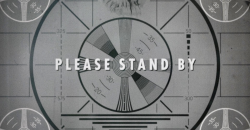

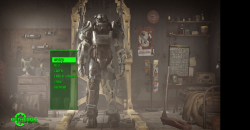
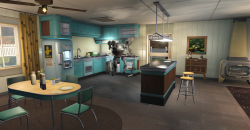

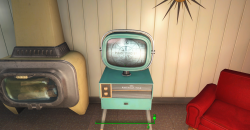
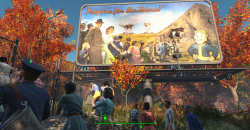
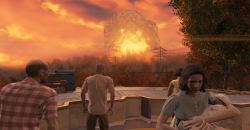
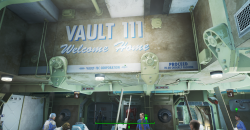

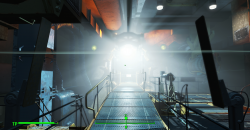
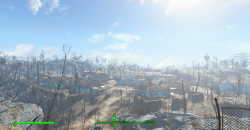

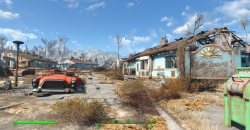
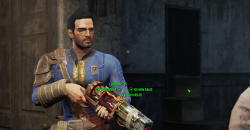
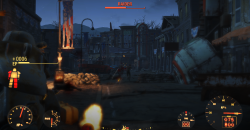
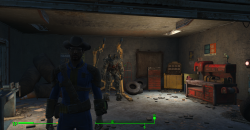


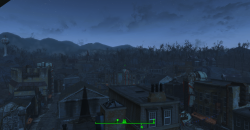
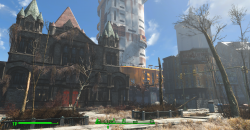

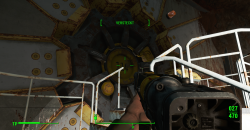
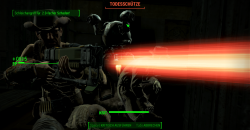
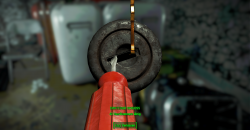
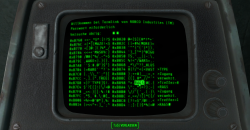
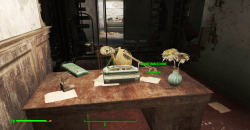

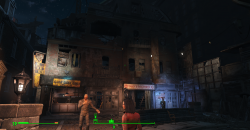
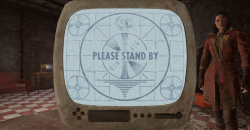
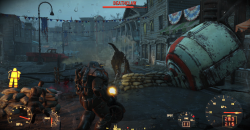

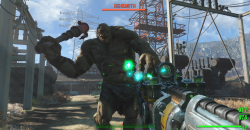
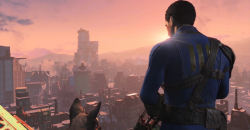
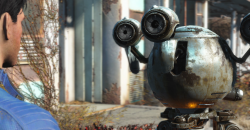
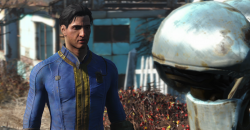

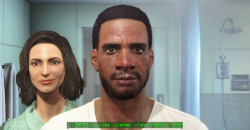

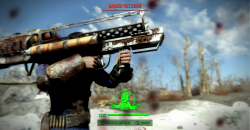
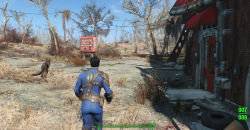
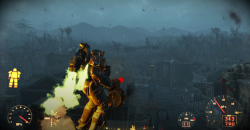
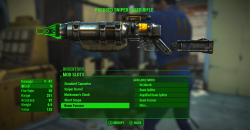
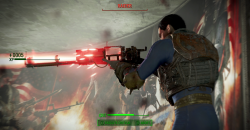

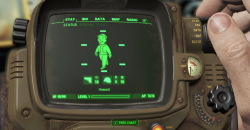
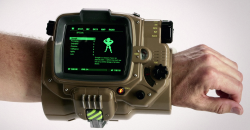
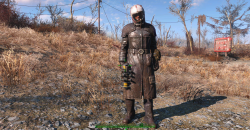

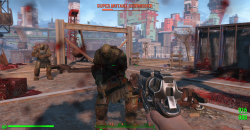
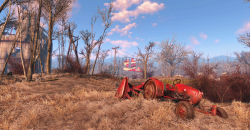
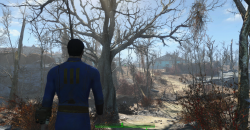
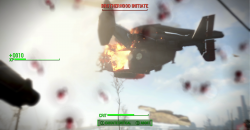

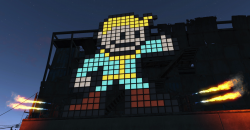
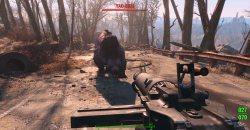
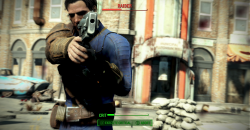
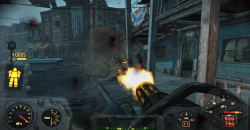

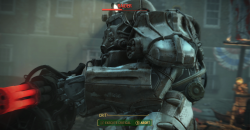
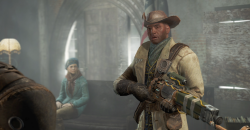
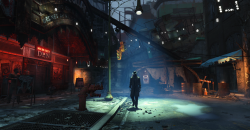

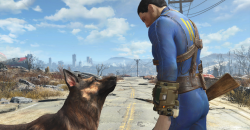
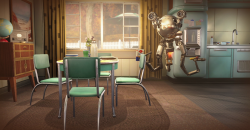
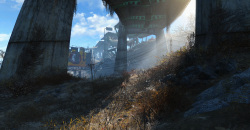
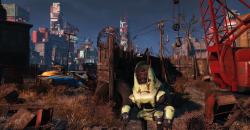
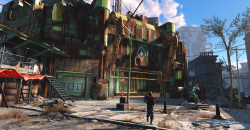
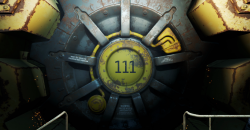
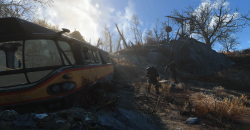
Can you please send me a key to ... It would be really appreciated ...
please can you send the key to
боты фигня
can you send key to
hi
plz send me a key
can you plz send me a key
send key
can you give me the key?
Пожалуйста, дайте мне ключ
Please give me the key
tare joc
Plz send me a key if ya don't mind!
Plz send me a key if ya don't mind!
Happy new years and good luck to all of you in the new year!
Merry Christmas and happy new year!
Can you send me a key? Thank you so much :)
:D yuyu
Норм
модно ключ вот маил
key please email at
Please email me at
Getting it as a gift for my friend
that really wants the game
lo quiero
ща качаю
bun
Want it
email me
key please
me too
I would Love you guys is you gave me the key. I'm a fallout fan.
Just to jet you know My EMAIL is if you want to send it to me. :)
pleeas give me kay
gg
pleas give